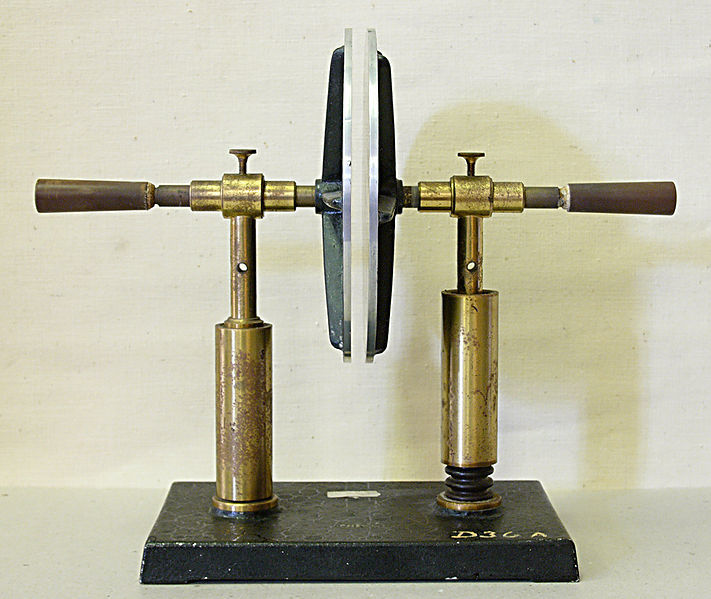Is This Why My iPhone Battery Loses Its Charge So Quickly?
 When a charged capacitor is disconnected from its source it will eventually discharge. This is because a small amount of charge leaks through the dielectric between the plates of the capacitor. Suppose we fill a parallel plate capacitor with a ceramic of relative permittivity
ϵ
=
2
.
1
and resistivity
ρ
=
1
.
4
×
1
0
1
3
Ω
⋅
m
. The capacitor is charged by connecting it to a voltage source. How long will it take
in seconds
for the capacitor to lose half of the charge acquired after disconnecting it from the source?
When a charged capacitor is disconnected from its source it will eventually discharge. This is because a small amount of charge leaks through the dielectric between the plates of the capacitor. Suppose we fill a parallel plate capacitor with a ceramic of relative permittivity
ϵ
=
2
.
1
and resistivity
ρ
=
1
.
4
×
1
0
1
3
Ω
⋅
m
. The capacitor is charged by connecting it to a voltage source. How long will it take
in seconds
for the capacitor to lose half of the charge acquired after disconnecting it from the source?
Image credit: Wikipedia
The answer is 180.4.
This section requires Javascript.
You are seeing this because something didn't load right. We suggest you, (a) try
refreshing the page, (b) enabling javascript if it is disabled on your browser and,
finally, (c)
loading the
non-javascript version of this page
. We're sorry about the hassle.
2 solutions
Discussions for this problem are now closed
Why aren't we taking 'KC' instead of 'C'..? where K is the dielectric constant. Is it because the 'Relative' Permeability is given..
Voltage across the capacitor can be written as V = I R ⟹ V = ρ A d d t − d q , where d is the distance between the plates and A is the area of each plate. ( − d q since charge is decreasing)
But for capacitor, q = C V at any time t .
⟹ V = C q = ρ A d d t − d q ⟹ d t = C ρ A d q − d q
Now, put C = ϵ d A ⟹ C = ϵ r ϵ o d A , where ϵ r is the relative permittivity. (=2.1)
⟹ d t = ρ ϵ r ϵ o q − d q
Integrating both sides ∫ 0 t d t . = ρ ϵ r ϵ o ∫ q 2 q q − d q
⟹ t = ρ ϵ r ϵ o l n 2 = ( 1 . 4 × 1 0 1 3 ) × ( 2 . 1 ) × ( 8 . 8 7 × 1 0 − 1 2 ) × l n 2 = 1 8 0 . 4 s
I solve it in the same way.
I don't know why, but it seems like I've solved this problem before on Brilliant. Anyways.
The situation is very similar to that of an R C discharge circuit.
Hence, the charge on the capacitor decreases exponentially. Therefore,
q = q o e R C − t
When q = 2 q o ,
2 q o = q o e R C − t o
Hence,
t o = R C ln 2
t o = ( A ρ l ) ( l A ϵ ) ln 2
t o = ρ ϵ ln 2
t o = 1 . 4 × 1 0 1 3 × ( 2 . 1 ) × 8 . 8 5 × 1 0 − 1 2 ln 2 = 1 8 0 . 4 s e c